
The Challenger 604 is an anomaly: an aviation innovation from the 1980s that not only withstands the test of time but continues to be one of the world’s most popular business jets. Its revolutionary design, decades of refinement and retooling, and reliable, efficient performance ensure that it retains its place in the modern business aviation landscape.
Its elegance, dependability, and focus on passenger and pilot comfort make it an enduringly popular choice in the large-cabin business jet category. This timeless, enduring workhorse is the product of decades of innovation, planning, reorganizations, and international business drama.
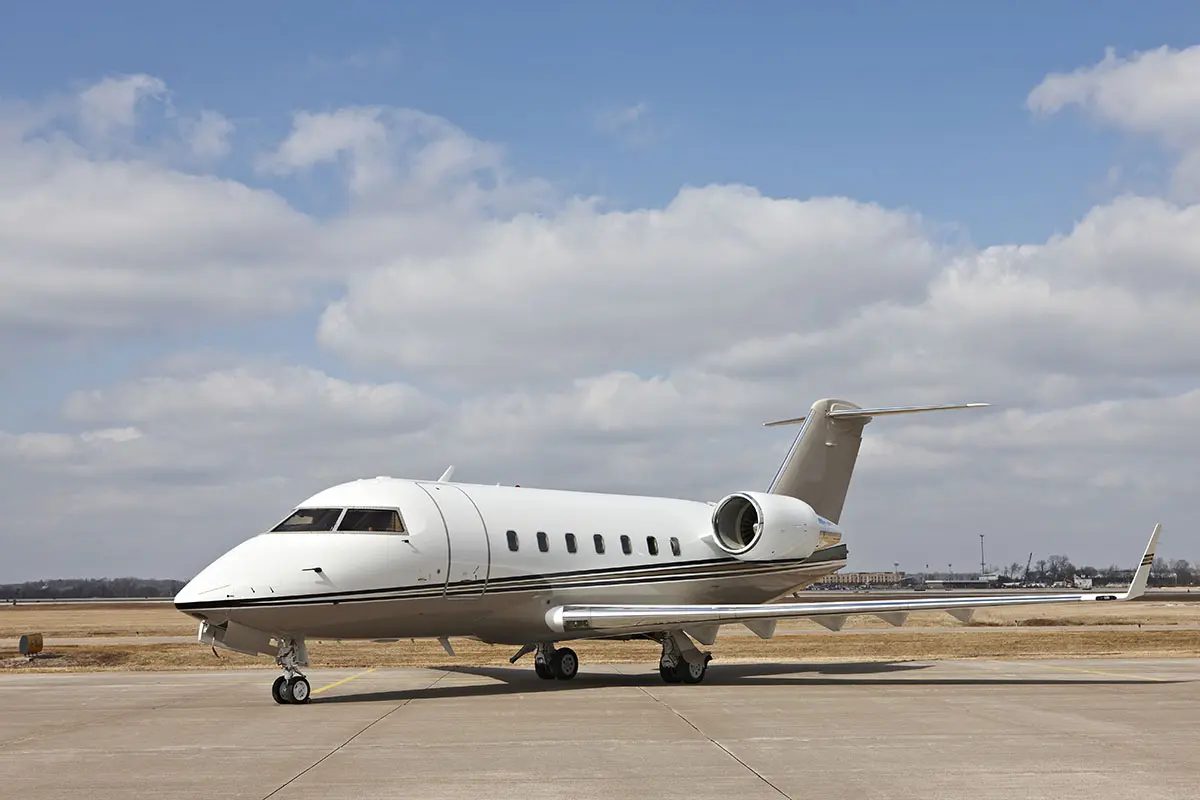
Canadair Limited in Montreal has been one of the largest companies in the Canadian aircraft industry since its creation. It was established by the Canadian government for military aircraft production in 1944 but sold in 1947 to General Dynamics Corporation, an American company. Initially, Canadair was General Dynamics’ most active and profitable division due to its close military ties and existing contracts. The company developed an excellent reputation over the next three decades, becoming known for refining and improving aircraft designed by other producers and designers. After severe financial struggles and downturns in the aviation industry, the Canadian government re-acquired the company in 1976. The government operated the business for a decade (with minimal financial success) before selling it to Bombardier, a prominent Canadian transportation company.[1]
Although Bombardier is now one of the world’s leading aircraft manufacturers, its purchase of Canadair was its first foray into the aviation manufacturing industry. Bombardier had built its reputation designing and producing snow-going vehicles for freight, personnel, and individual transport (including the Ski-Doo line of personal snowmobiles). It branched out into rail transportation in the 1970s, developing urban mass-transit solutions (including the Montreal subway system) and innovative long-range, high-speed rail transportation.
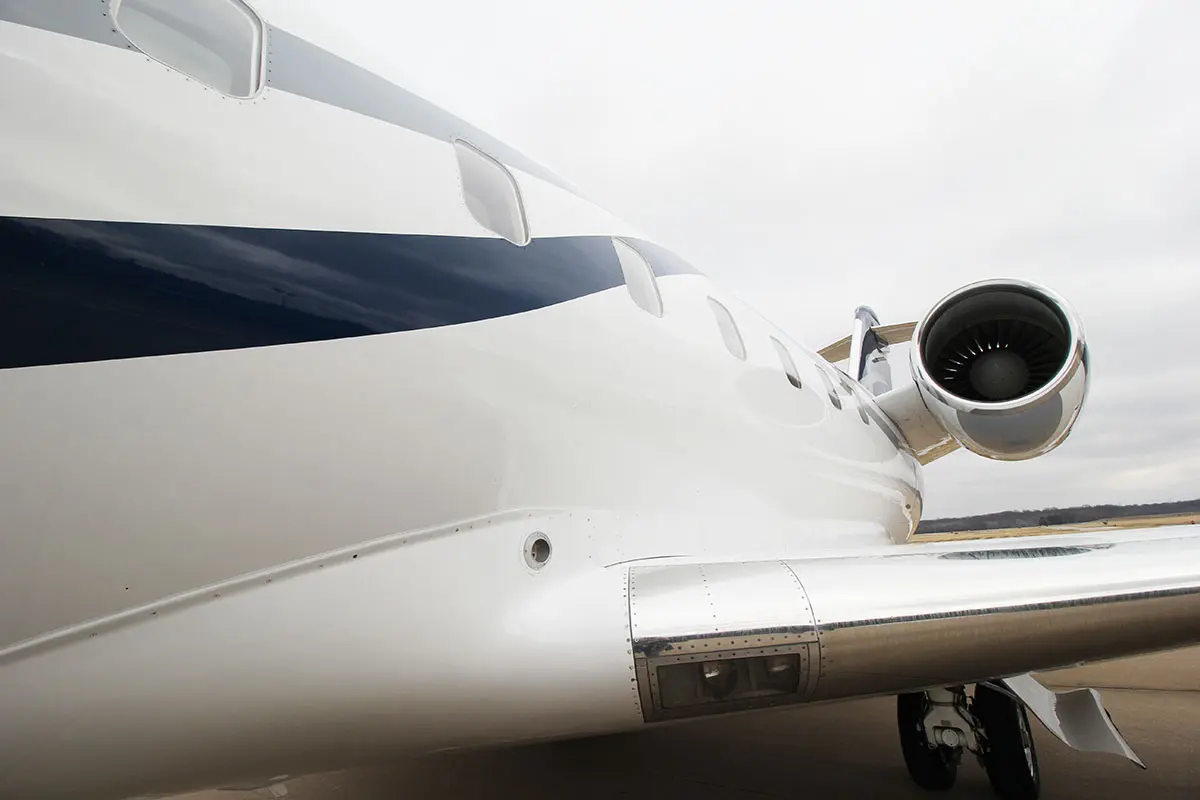
What eventually became the Challenger business jet began development in 1975. Canadair initially approved funding for the design and development of famed aviation designer William Lear’s conceptual Lear Star 600. Following the government’s reclamation of the company, the design and development of the Challenger business jets continued at an unsteady pace. Internal conflicts, engineering challenges, and financial struggles hampered progress. The concept was re-christened the Challenger 600 when Lear acrimoniously left the design team in 1977.
Canadair initially offered its customers three variants on the Challenger design: the primary high-speed (Mach 0.85), non-stop long-range 7,240 km (4,500 miles) executive version that could seat 14 passengers, a commuter airline version that could carry up to 30 passengers in a 2-1 seating arrangement, and an air freight version that could accommodate nine containers with 3,400 kg (7,500 lbs) of cargo loaded via the front combo cargo/passenger entry door. The executive version and the cargo version initially drew the most interest, and both commercial freight and private executive investors clamored to place initial orders. In early 1977, Canadair had 70 firm pre-orders and adequate funding to begin production; by summer, a full-scale marketing mockup made its appearance at the Paris Air Show and other international exhibitions. By the end of 1977, just before the rollout of the first aircraft, Canadair had sold 106 Challengers and confirmed 116 orders—a first in commercial aviation history.[2]
The new wide-body jet’s configuration was re-engineered and retooled dramatically (and repeatedly) during its laborious and lengthy design process.[3]By the time Canadair debuted the prototype in May 1978, the design featured a supercritical wing design, state of the art avionics and engines, and a T-tail configuration rather than a conventional tail (i.e., mounting the horizontal stabilizer, or tailplane, high on the vertical stabilizer, or fin). This elevated tailplane design minimizes airflow disturbance, allowing smoother and faster airflow over the elevators, reducing drag, and allowing more responsive pitch control. These design choices ultimately allow for better handling and reduced turbulence.
The first Challenger prototype performed its maiden flight in November 1978, and structural airframe testing began in early 1979. It was the first aircraft to be certified under the new US Federal Aviation Regulation (FAR) 25 standards. To meet these requirements, the aircraft underwent rigorous testing, mostly conducted at Canadair’s new Mojave Kern County Airport testing facility in California. A deadly crash in 1980 during a stall test threatened to derail production. The aircraft performed well during a barrage of other rigorous tests, however, and the design was deemed to be safe. Transport Canada approved the CL-600 type certification in August 1980; the United States Federal Aviation Administration (FAA) followed suit in November 1980.[4]
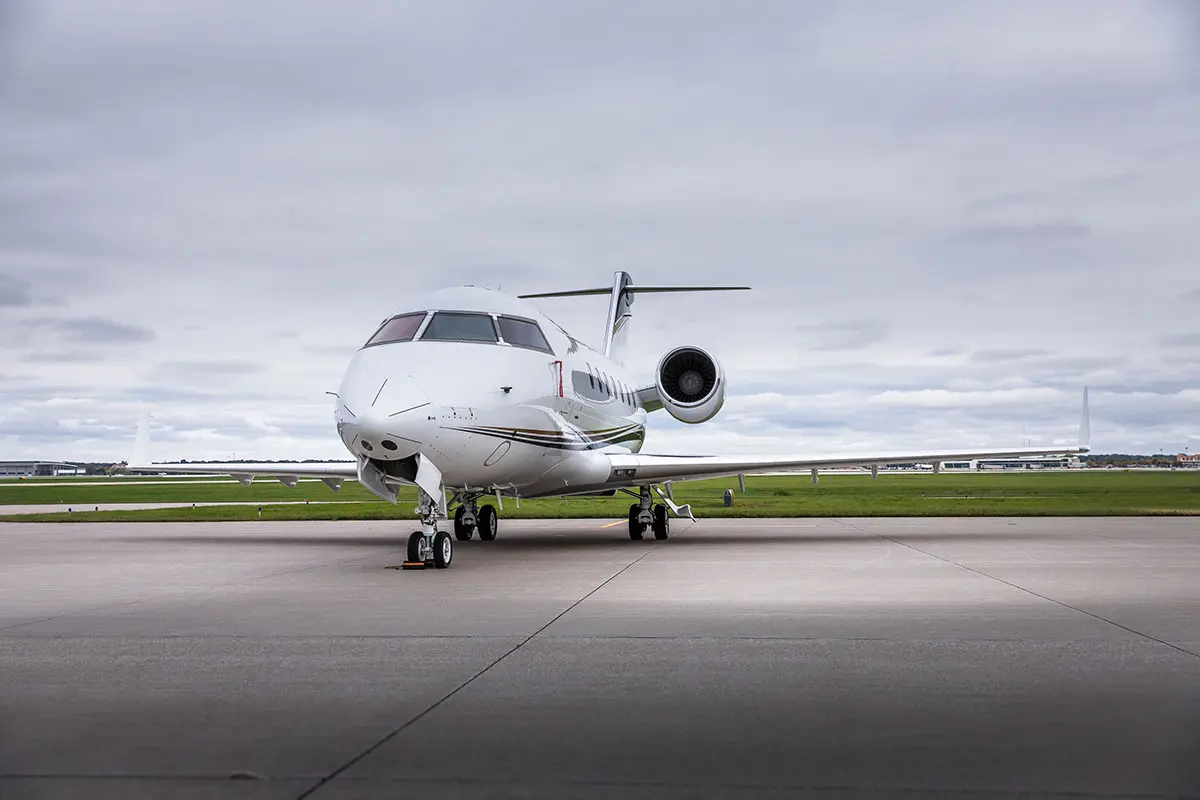
Although the Challenger finally launched into production in the early 80s, the years of re-design and testing had taken a heavy toll on Canadair’s finances. By 1986, the company was on the verge of bankruptcy. Bombardier purchased it with lofty intentions, building off the momentum of the initial Challenger sales and financing the development of new models and derivatives. The investment paid off in spades: the Challenger 600 established Bombardier as a formidable player in the aviation manufacturing industry.[5] Bombardier used the Challenger 600 series as the backbone of its new commercial Canadian Regional Jet (CRJ) program while also producing the aircraft for private sale.
Capitalizing on the Challenger 600’s success, Bombardier filled out its business jet portfolio with longer-range and larger business jet models (such as the Bombardier Global Express and the Bombardier CRJ100 series) and the smaller Challenger 300 series of super-mid-size jets. In the 1990s, capitalizing on the Challenger’s popularity and profitability, Bombardier acquired Learjet and its family of small business jets and developed the ultra-long-range Global Express family of large business jets.[6] Today, Bombardier Business Aircraft has produced over 4,900 aircraft in more than 115 countries.[7] Its diverse array of offerings allow customers to stay loyal to the Bombardier brand as their business travel requirements evolve.
In the mid-1990s, Bombardier upgraded the Challenger design, improving the range, weight capacity, and performance to make it more competitive with the Falcon 900B and Gulfstream GIV-SP aircraft. The new Challenger 604 model sported heavier main landing gear, larger wheels, improved tires and braking system, and a larger wheel-to-fuselage underbelly fairing. These modifications significantly increased the maximum takeoff weight to 21,863 kg (48,200 lbs) from the Challenger 600’s maximum of 14,742 kg (32,500 lbs). The new-and-improved Challenger 604 became the Challenger series’s best-selling model, entering the market in 1995 and continuing production through 2006. A total of 366 were delivered, and the resale market remains strong. [8]
In addition to the private commercial market, Bombardier manufactured several variants of the Challenger 604 for international military entities, including a Medium Range Command and Control Aircraft for the United States Coast Guard. Bombardier customized a multi-mission Challenger 604 for the Danish military, optimizing it for maritime patrol and search and rescue missions and enhancing its landing capabilities for the region’s many short, gravel runways.
In the 1990s, Bombardier launched the revolutionary Flexjet fractional ownership program, an innovative private business jet solution for individuals and companies that has since been copied by numerous other companies. Participants purchase shares that entitle them to a certain amount of annual flight time in a company’s aircraft or fleet of aircraft. Programs like this allow customers to experience the convenience and luxury of a variety of different business jets. This familiarity increases the chances of participants choosing to purchase a private jet as their business travel needs increase. It also allows them to experience and compare their options.
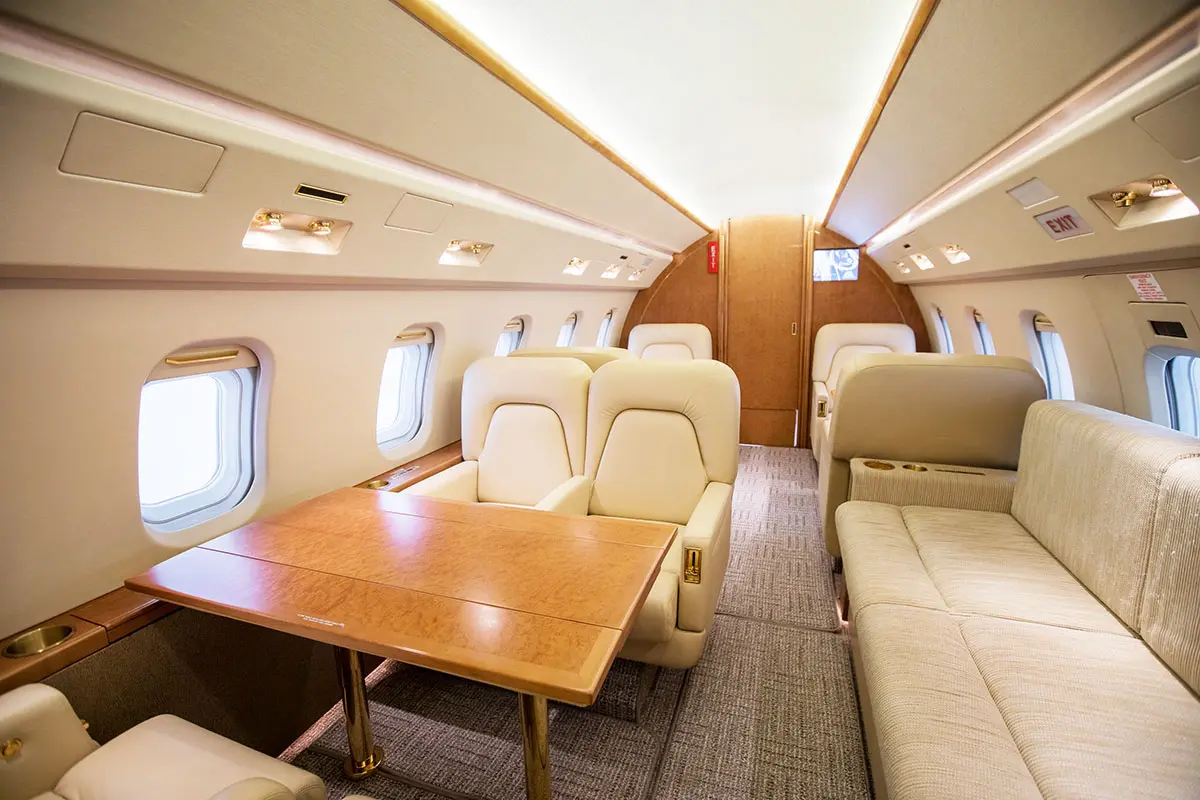
The Challenger 600 series aircraft lead the market in large-cabin business jets. Competitors in this category include the Dassault Falcon 2000 series and 900 series jets, the Gulfstream G-II and G-III series models, and the Embraer Legacy 600 and Legacy Shuttle aircraft.
The Challenger 604 is powered by two turbofan General Electric CF34-3B engines mounted in aft fuselage pods, each offering 8,729 pounds of thrust at takeoff. These powerful engines allow it to reach a maximum high-speed cruise of Mach 0.82 with a typical cruise speed of Mach 0.8 and a long-range cruise speed of Mach 0.74. The engines are equipped with automatic power reserve and are capable of 9,220 pounds of thrust per engine with reserve initiated.
Like its predecessors in the Challenger series, the Challenger 604 has a supercritical wing design. Combined with winglets, the design dramatically reduces drag, improving fuel efficiency to an average of 289 gallons per hour (GPH). Although these design features are common in larger commercial airliners and military aircraft, using them in a business jet design was revolutionary.
Bombardier changed the undercarriage design significantly for the Challenger 604. These redesigns enable the Challenger 604 to perform smoother takeoffs and landings than the original Challenger. They also increase the fuel capacity to 19,850 lbs. As a result, the Challenger 604 can travel up to 4,027 nautical miles (7,458 km) at its long-range cruise speed, with a maximum operating altitude of 41,000 ft.[9]
While its impressive range allows easy cross-country and transoceanic travel, its largest-in-class cabin can accommodate up to 19 passengers. The wide-body offers a spacious, 1,150 ft3 stand-up cabin with two seating sections. (Interior cabin dimensions are just over 6’ in height, 8’ in width, and 24’ in length.) This exceeds the interior cabin space of the Dassault Falcon 2000, which offers only 1,024 ft3 of space.
Standard cabin configurations include four club chairs in the forward seating section and a combination of conference seating and divans in the aft section (typically outfitted to accommodate 8-10 passengers). Fully-reclining chairs and lay-flat divans allow comfortable, easy overnight flights, and a passive noise insulation system minimizes ambient cabin noise. Overall, the Challenger 604 aircraft measures 20’7″ tall and 68’3″ long, with a wingspan of 64’3″. It has 115 ft3 of baggage space (all internal) and a convenient aft lavatory.[10]
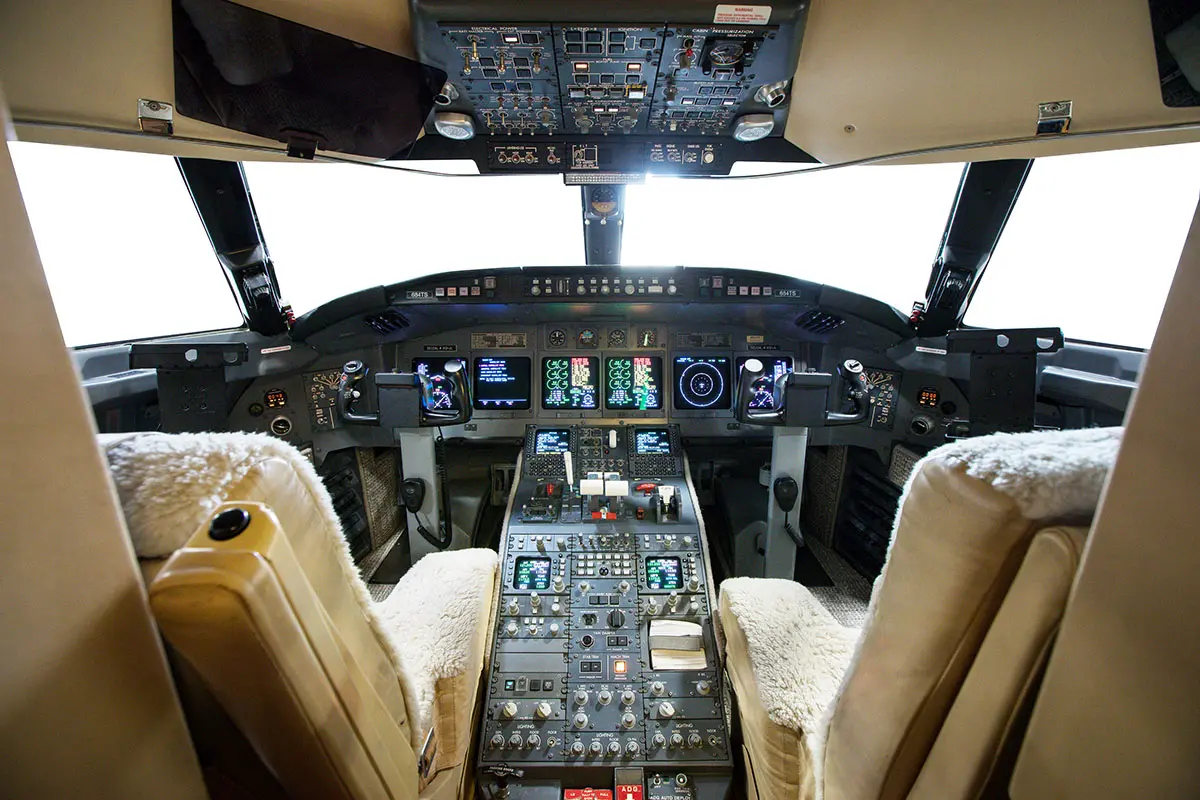
The Challenger 604 is certified for civil operation in 30 countries. It has a balanced field length of 5,840 ft and can land in 2,777 ft. Upon takeoff, it can climb to a cruise altitude of 37,000 feet in 22 minutes.[11] It requires two type-rated pilots for operation.
The Challenger 604 is factory-outfitted with the Collins ProLine 4 Electronic Flight Instrumentation System (EFIS), featuring color CRT display screens. The Pro Line Fusion system avionics package is now available as an FAA-certified upgrade. Its three 14.1-inch widescreen LCDs, each with configurable windows, provide 35 percent more display screen area. Its features are designed to improve situational awareness and reduce pilot workload, including:
The Pro-Line Fusion upgrade brings the operational and avionics capabilities of the Challenger 604 aircraft in line with those of the later-model Challenger jets (the Challenger 605 and Challenger 650), which are factory-equipped with Collins Pro Line 21 Advanced avionics systems. The upgrade is also designed to help Challenger 604 operators comply with future regulatory requirements. You can find out more about the Pro Line Fusion upgrade for the Challenger 604 here.
As of January 2021, a consolidated listing service found 24 pre-owned Challenger 604 jets for sale, with prices ranging from $3,500,000 to $4,995,000. The operating costs for this model are generally equivalent to or better than most other large business jets. Yearly fixed operating costs have been reported as $496,310 (compared to the $564,228 average for large jets).[13] Based on 450 annual owner-operated hours and $4.25-per-gallon fuel cost, the Challenger 604 has a total variable cost (an aggregate of fuel expense, maintenance labor expense, scheduled parts expense, and miscellaneous trip expense) of $1,390,950.00/year, or $4,040.33/hour.[14]
Challenger 604 aircraft require 12, 24, 36, 48, 60, 96, and 144-month inspections as well as 600, 1200, 2400 and 3000 hour inspections. The landing gear is due for a “detailed” inspection at the first 96-month mark; following that, a “restoration” inspection must be performed every 96 months thereafter. Counterintuitively, the detailed inspection is mostly a visual and corrosion inspection that requires minimal disassembly of the gear, while the subsequent restoration inspections are much more in-depth, comparable to an overhaul.
Overall, the service requirements for the Challenger 604 are comparable to those of its counterparts. An authorized Bombardier service center should perform all maintenance.
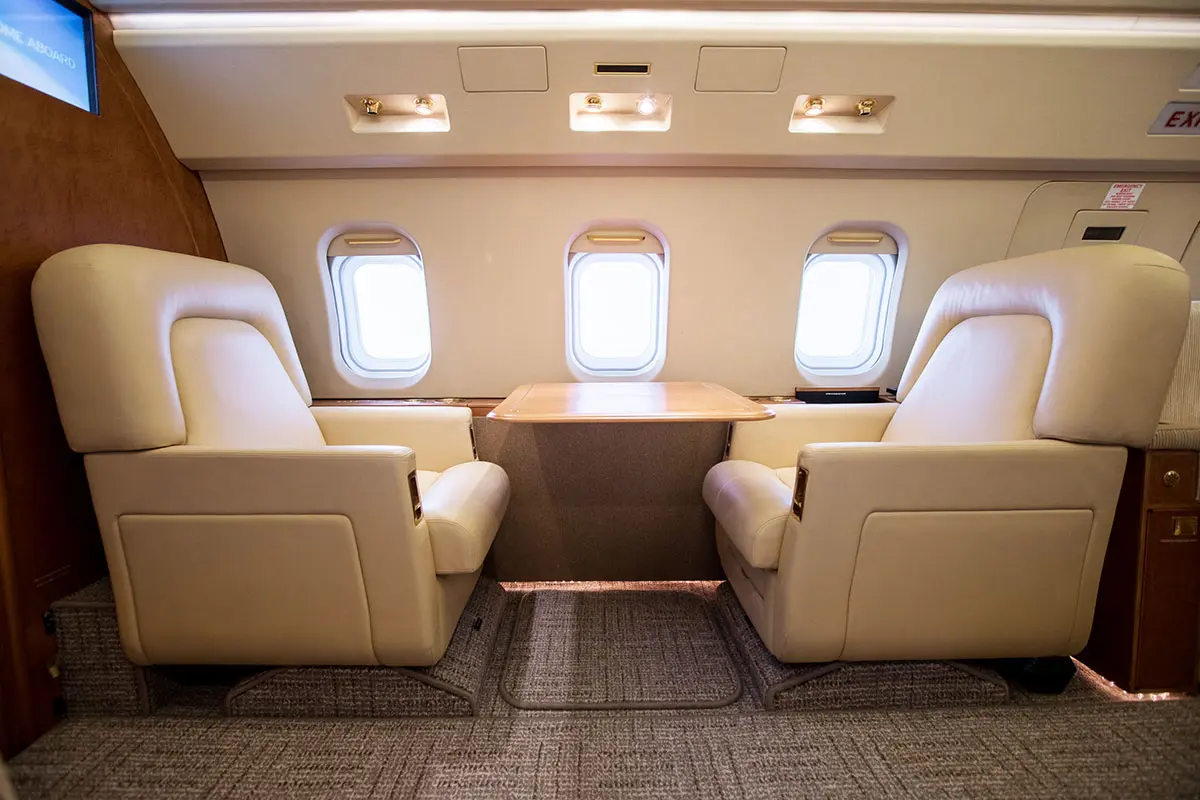
Upgrading to a large-cabin business jet like the Challenger 604 can allow your business to reduce or avoid commercial airline travel, both continentally and internationally. It reduces flight delays, potential exposure to health hazards, security delays, and other hassles. Having your own business jet enables you to travel in comfort, conduct business privately and efficiently, and arrive at your destination refreshed and ready to go.
Aircraft used for qualified business purposes, like Part 91 business use flights, are usually depreciable under a modified accelerated cost recovery system over five years. Alternately, you may use the alternative depreciation system with a six-year recovery period. (Note that using the aircraft for non-business purposes may impact the allowable amount you can deduct yearly for depreciation). Further, the 2017 Tax Cuts & Jobs Act can allow qualified individuals and businesses to deduct up to 100 percent of the cost of a new or used aircraft purchased after September 27, 2017, and placed into service before January 1, 2023. These incentives increase the benefits and cost savings of buying a business jet like the Challenger 604. There’s no time like the present—explore your options today!
If you’d like to purchase or upgrade a Challenger 604 or other business aircraft, talk to one of our experienced representatives today.
[1] Upton, Bill. “Canadian Aircraft Museum Aircraft: CANADAIR CL-600 / 601 / 604 CHALLENGER SERIAL 1003, REGISTRATION C-GGCT.” Canada Aviation Museum. https://documents.techno-science.ca/documents/CASM-Aircrafthistories-CanadairCL-600Challenger.pdf, 2007. Accessed 6 Jan 2021.
[2] Upton, “Canadian Aircraft Museum Aircraft,” supra.
[3] “PICTURES: Four decades of the Challenger 600 series.” Flight International. www.FlightGlobal.com, 10 October 2018. Accessed 8 Jan 2021.
[4] Upton, “Canadian Aircraft Museum Aircraft,” supra.
[5] “OPINION: In praise of the Challenger.” Flight International. www.FlightGlobal.com, 25 November 2018. Accessed 8 Jan 2021.
[6] “History.” www.bombardier.com. Accessed 6 Jan 2021.
[7] “Business Aircraft.” www.bombardier.com. Accessed 8 Jan 2021.
[8] Upton, “Canadian Aircraft Museum Aircraft,” supra.
[9] “Bombardier Challenger 604.” www.Bombardier.com. Accessed 8 Jan 2021.
[10] “Bombardier Challenger 604.” www.Bombardier.com. Accessed 8 Jan 2021.
[11] Id.
[12] “Collins Aerospace Pro-Line Fusion® upgrade for Bombardier Challenger 604 aircraft now certified.” www.CollinsAerospace.com. 13 Dec 2018. Accessed 8 Jan 2021.
[13] “Bombardier Challenger 604 Operating Costs.” www.prjet.com. Accessed 8 Jan 2021.
[14] “BOMBARDIER/CHALLENGER 604 Price and Operating Costs.” Aircraft Cost Calculator, LLC. 2019. www.aircraftcostcalculator.com. Accessed 8 Jan 2021.